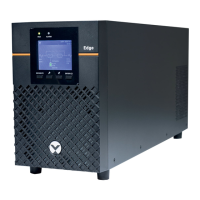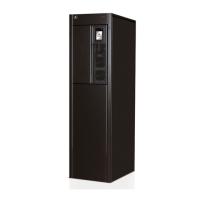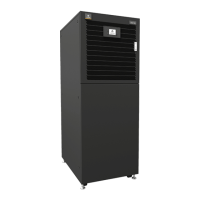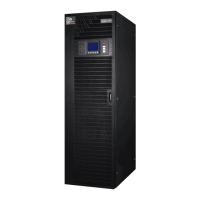INSTALLATION12
2.6. USB Communication Connection
You can connect the PSI5 to a computer via USB allowing unattended, controlled-shutdown of your computer
in case of UPS input power failure. The UPS works with the computer running software built-in within the
Microsoft® Windows® operating system. Use of this feature is not required for proper operation of the UPS. To
use this feature, plug the provided USB cable into USB Type-B port located on the rear panel of the UPS and the
other end into an open USB port on your computer.
2.7. Emergency Power-o (EPO) Connection (Optional)
To comply with national and local wiring codes and regulations, the EPO connector internally disconnects all
power sources to the UPS and connected equipment. The default operation is "active open" which means you
must remove the factoryinstalled jumper and connect to external contacts that are normally closed, but open
during a power-o event. The logic may be reversed in the Settings. If you do not use the EPO connector, leave
the factory-installed jumper in place and the default EPO settings in the Settings.
2.8. External Battery Cabinet Connection on 2U and 3U Models
(Optional)
External battery cabinets provide longer battery run-time for connected devices. Refer to SPECIFICATIONS on
page 41, and Battery Run Times on page 47, to select the appropriate model and quantity for your PSI5
model and applications. You can connect up to 6 battery cabinets to the 2U EDGE models.
To connect an external battery pack:
1. Connect one end of the external-battery cable to the UPS and one end to the battery cabinet as shown in
Figure 2-6 on the facing page.
2. If connecting more than one external battery, connect one end of the external battery cable to the second
connector on the battery cabinet, the connect the other end to the next battery cabinet as shown in Figure
2-6 on the facing page.
NOTE: After install and initial start-up, set the number of installed battery cabinets in the UPS Settings.
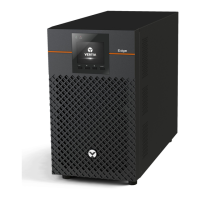
